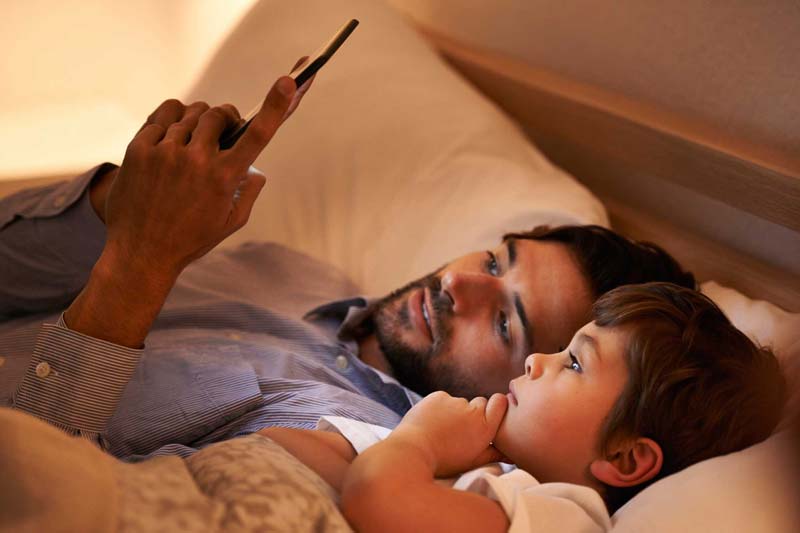Bedtime Routine 101 For Toddlers (Complete Guide)
Having difficulties putting your child to bed?
Then look no further. A bedtime routine may just be the answer you have been looking for.
You may, or may not have heard of a bedtime routine so let’s start with the basics first.
What is a bedtime routine?
The word routine is defined as a sequence of actions which are regularly followed.
Hence, a bedtime routine is a set of actions that you perform regularly before you go to bed, and in this case, before your child goes to bed.
Why do toddlers need a bedtime routine?
Check with yourself, are you in these situations:
- I can’t get my child to sleep.
- My kid does not want to go to bed.
- My baby gets up frequently at night.
- I do not have time for myself!
If you are, then maybe, setting up a bedtime routine for your little one is a good choice, for you and your baby.

What are the advantages?
- It is easier for your child to go to bed and fall asleep.
- It helps your child to fall asleep in an unfamiliar environment as long as the routine stays the same.
- A repetition of events comforts your child as he feels secure, knowing what is coming next.
- You get to build your child’s confidence in his world.
- Your child will learn how to wind down and relax after a busy day.
- It allows you to spend quality time with your child.
What are the benefits of an early bedtime for baby?
When you want to start a bedtime routine for your child, best to start it during the baby stages.
Here are 5 important benefits that may help you and your child in the long run:
Less night waking
Do you find your child getting up repeatedly at night?
And for some reason, you just could not figure out why? Chances are, your child may not be getting enough sleep altogether.
When your child’s body and mind are tired, he’s in the “stress” zone. Let’s take yourself for example. If you are really tired and stressed out, do you find yourself getting up repeatedly?
That’s right! No quality sleep. Through a bedtime routine, you can pretty much rest assured that your child is probably (I say probably cause every child are different) getting ample amount of sleep.
Fall asleep faster
Some kids take an awfully long time to sleep.
Possibly that their minds are still very active, and they just don’t want to sleep, yet.
For children who go through a bedtime routine, their minds are somewhat prepared for sleep. They know bedtime’s coming and they generally have no issues with it.
If your child sleeps at odd and random hours, this fixes that problem.
Quality bedtime
Like it or not, bedtime involves you, or your spouse.
You just got to spend some time with your child during that precious 30 minutes or so before he goes to bed.
During this process, you can ber-bonding-bonding with your child. Your child goes to bed happy. You get to put your child to bed easily.
Win-win for both parties.

Less bedtime resistance
Live I mentioned earlier, your child is somewhat ready to go to bed. You don’t even have to tell him that it’s bedtime.
Once your child is already using a bedtime routine, his biological clock automatically tells him that it is time to sleep.
That’s why you see some parents are able to get their child to sleep easily while you’re struggling left and right with yours.
Better sleeping habits in the future
As your child grows older, you don’t really want to nag, nag and nag your child to go to bed all the time.
Once a routine is “programmed’ in an individual, it’s kind of hard to get it to go out of sync.
At least you know that you are investing in your child’s future by having him going to bed early and regularly.
When to start a baby bedtime routine?
Although there are articles suggesting to start a routine as early as 3 months old, it is somewhat easier to start a routine when your child has some form of understanding.
Some say from 4 weeks old onwards.
To be honest, it’s flexible. You can start it anytime you want.
However, you can start introducing simple routines during the early stages of infancy, which will do you good in the future. It’s sort of like a prep course for your baby.
It is best to keep the routine short, for about 30 minutes or so.
You do not want to be doing the same thing again and again for more than an hour each day.
A toddler bedtime routine chart
Once your child is older, it’ll be interesting to have a chart so that your toddler can refer to before bedtime.
But first, you need to pick the routines which you plan to use.
Here are a few options:
- A warm bath.
- Drinking a bottle/cup of warm milk.
- Changing into pyjamas.
- Assembling a puzzle.
- Read a book.
- Hugs and cuddles.
- Brushing teeth.
- Singing a lullaby.
- Turning off the lights.
- Body massage.
Now, with the options above, pick a few of them and make them into a sequence. If you have others, feel free to use them too.
Here’s an example of what you can do with this simple chart.

You can simply use the above as an example.
Of course, it’s flexible. Just mix and match which you deemed fit.
What time should my child go to bed?
The recommended time to go to bed:
Between 6:30 pm to 8:30 pm.
Anytime after 8:30 pm is not advisable as your child may be overtired by then. When your child is overtired, he can be cranky and frustrated. You do not want that to happen as this will disrupt the routine itself.
When a child is overtired, a stress hormone called cortisol will be released into your child’s body. This hormone will cause your child to wake up many times throughout the night, and wake up early in the morning.
Truth be told, getting our children to bed within the recommended time frame is not an easy task. It takes a lot of hard work and commitment to do so.
Some factors to consider:
- Dinner time (especially with extended families).
- Outing sessions (Malaysians & Singaporeans have a tendency to spend their evening outside).
- Working parents (late working hours).
- Influence by other caretakers (conflict of opinions – some do believe that tiring the child out just before bedtime is a better option).
If you do face some of the issues above, it is best to sort them out first before proceeding with a bedtime routine.

How long should my child sleep?
The sleeping hours for different age group varies. Here’s the latest recommendation by the American Academy of Sleep Medicine:
- Infants 4 to 12 months: 12 – 16 hours
- Toddlers 1 to 2 years old: 11 – 14 hours
- Children 3 to 5 years old: 10 – 13 hours
- Older children 6 to 12 years old: 9 – 12 hours
The sleeping hours stated above are inclusive of nap hours. By knowing the number of hours of sleep your child should be getting, you can roughly gauge the time your child should go to bed.

How to make the bedtime routine an easier process?
Offer lots of choices for your child’s bedtime – Let your child pick between 2 options. Try not to use open-ended questions as these questions tend to agitate your child if he can’t come to a decision.
Examples:
- Do you want to play with the puzzles or read a book?
- Pyjamas with cars or pyjamas with animals?
- Which song? Twinkle Twinkle Little Star or Baa Baa Black Sheep?
- Do you want Mummy or Daddy to put you to bed?
Use a soft toy or a baby comforter – There will be a certain extent of separation anxiety when it comes to bedtime.
To help ease the anxiety, it is good to have an object to replace you when you leave the room after your child falls asleep. It works exactly the same way as how you had your smelly pillow back then.

Create a relaxed environment to wind down – Keep the television out of the bedroom. Do not watch any television an hour before bedtime. Put away all mobile and electronic devices away.
Provide a comfortable and safe environment to sleep – Keep the room temperature cool and constant. Consider using a baby sleeping bag to achieve a constant temperature. This will eliminate the use of common blankets that are considered unsafe for newborns and toddlers.
Persist and stay consistent – It is always very easy to give up if the routine does not work out in the beginning. Most parents succumb to their little ones’ cry. Who doesn’t anyway? However, it is important to know that it takes a few nights for your child to get adjusted to. Therefore, be patient, be consistent.
One final benefit.
And what is that?
A benefit just for you. Yes, you.
Not only does it brings a lot of benefits for your child, it helps you too. We as parents are human beings after all. We too, need to wind down and relax after a busy day at work or at home.
If your child has no trouble sleeping and goes to bed early, the remaining hours of the evening are all yours!
You can watch a movie, read a book, listen to your favourite music or even indulge in your hobbies.
It helps you to relax, alleviates the stress accumulated throughout the day and gets you recharged and ready for the next day.
A bedtime routine for your child. Are you up for it?








































